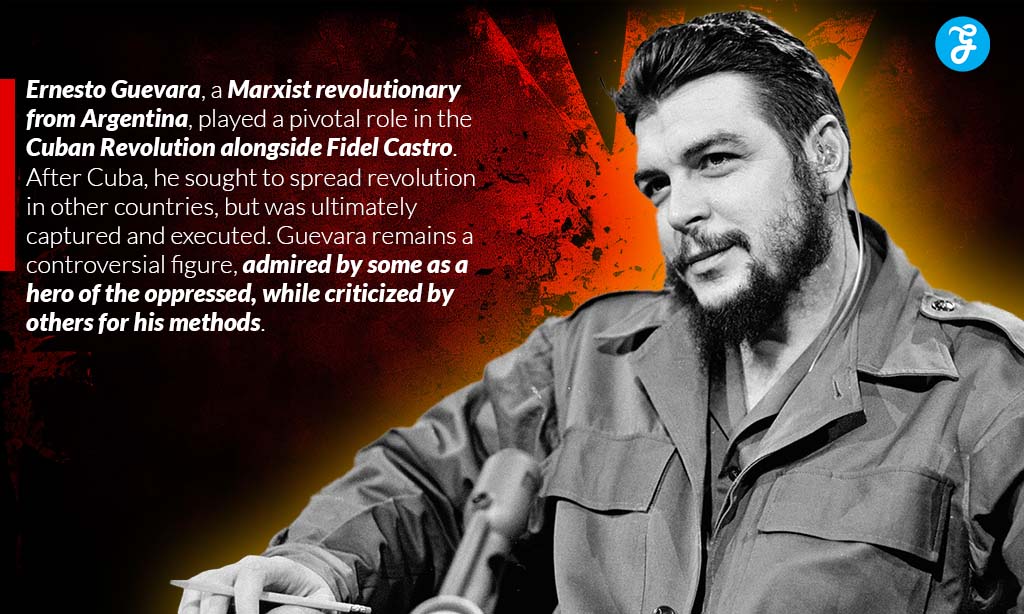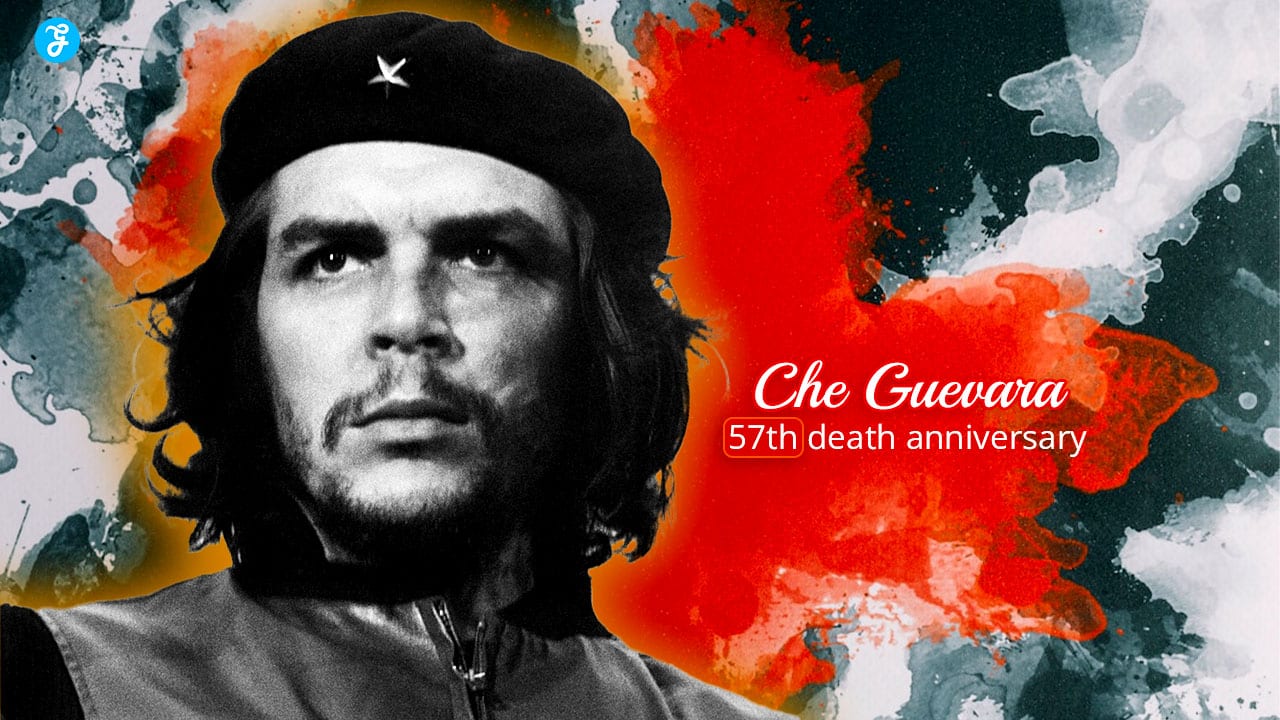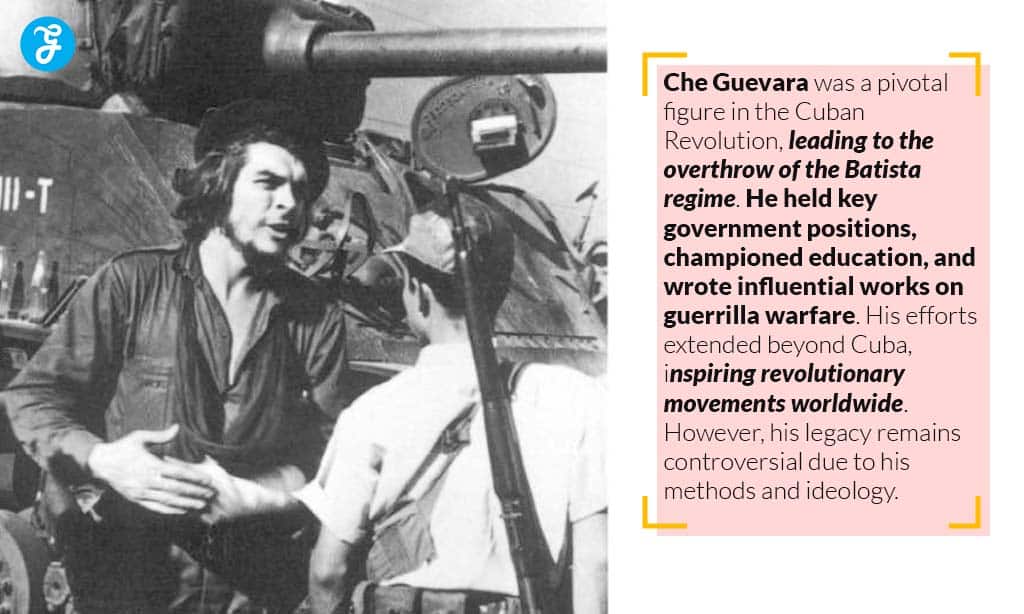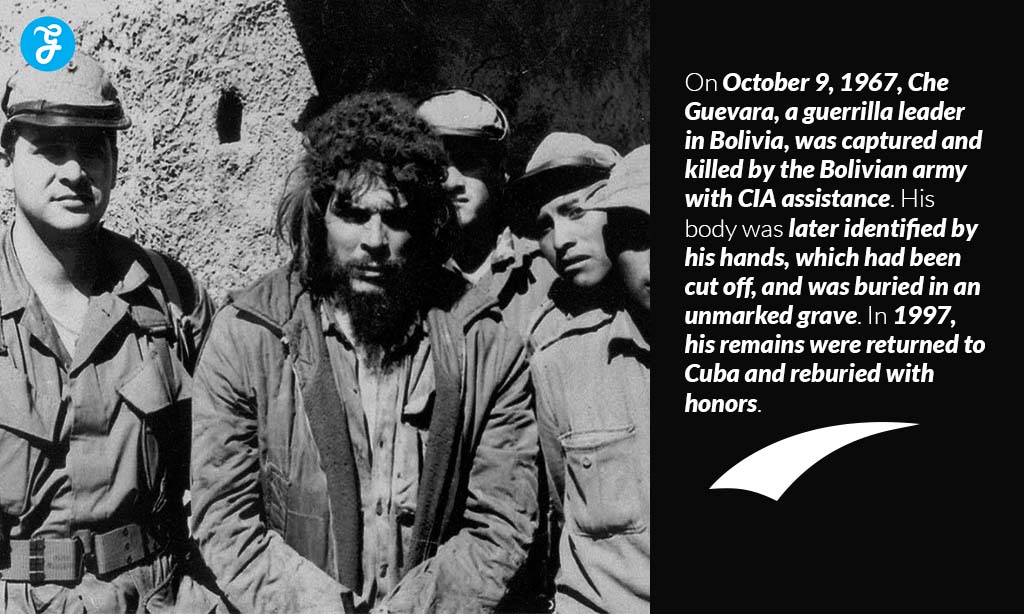Today marks the 57th death anniversary of Che Guevara, a name that still sparks passion and debate across the globe. On this day in 1967, the world lost a controversial figure who would go on to become one of the most recognizable faces of revolution.
As we commemorate the 57th death anniversary of Che Guevara, it’s worth exploring how his legacy continues to influence politics, culture, and social movements worldwide.
Che Guevara: The Man Behind the Icon
Before we dive into Che’s lasting impact, let’s take a quick look at the man himself. Born in Argentina in 1928, Ernesto “Che” Guevara was a young doctor who became a revolutionary. His journey from a middle-class Argentine family to a key figure in the Cuban Revolution is like something out of a movie. Che’s early travels through South America opened his eyes to the harsh realities of poverty and inequality.
These experiences lit a fire in him, pushing him towards radical politics. In 1955, he met Fidel Castro in Mexico, and the rest, as they say, is history. During the Cuban Revolution, Che proved himself as a fierce guerrilla fighter and strategist.
After the revolution’s success, he held important positions in the new Cuban government. But Che wasn’t content with just Cuba. He left to spread revolution elsewhere, eventually meeting his end in Bolivia on October 9, 1967, which is 57 years ago today.
Che’s Political and Ideological Legacy

Even 57 years after his death, Che Guevara’s ideas continue to resonate in political movements, especially in Latin America. His writings on guerrilla warfare and revolution have been a go-to guide for leftist movements worldwide. Che’s anti-imperialist stance has been particularly influential.
He argued against U.S. influence in Latin America and advocated for a united front against what he saw as capitalist exploitation. These ideas still find echoes in modern anti-globalization movements.
His concept of the “new man” in socialism, emphasizing moral incentives over material ones, continues to inspire debates on alternative economic models. While some criticize his economic policies in Cuba, others see them as an attempt to create a more equitable society.
57th Death Anniversary of Che Guevara: Cultural Symbol
Perhaps nothing speaks to Che’s enduring legacy more than his iconic image. One of the most widely reproduced images in history is the well-known “Guerrillero Heroico” photograph, which Alberto Korda took in 1960.
From t-shirts to posters, Che’s bearded face with a beret has become a universal symbol of rebellion. Interestingly, on this 57th death anniversary of Che Guevara, we can reflect on how his image has been used (and some would say misused) over the years.
Here’s a quick look at where you might spot Che’s face:
| Medium | Examples |
|---|---|
| Fashion | T-shirts, hats, bags |
| Art | Posters, murals, paintings |
| Advertising | Used to sell everything from vodka to cars |
| Social Media | Profile pictures, memes |
The irony of Che’s image being used in capitalist marketing isn’t lost on many. It’s a complex part of his legacy that we’re still grappling with 57 years after his death.
Che’s Legacy in Contemporary Social Movements
As we mark the 57th death anniversary of Che Guevara, it’s clear his influence extends beyond Latin America. Modern social movements often draw inspiration from his revolutionary spirit. Anti-globalization protesters have adopted Che’s critiques of international capitalism.
Indigenous rights movements, particularly in Latin America, often invoke his name in their struggles. Even in recent years, we’ve seen Che’s image and ideas pop up in various political campaigns around the world.
Key Principles of Che Guevara’s Guerrilla Warfare Tactics
- Believe in your cause. Even a small group of dedicated fighters can beat a big, regular army.
- Don’t wait for the perfect moment. Sometimes, you have to create the right conditions by taking action.
- In poorer countries, especially in Latin America, focus on fighting in the countryside, not the cities.
- Make friends with the locals. You need their support to succeed.
- Keep hitting the enemy with small attacks. It’s like death by a thousand paper cuts.
- Stay on the move. Don’t let the enemy pin you down in one place.
- The night is your friend. Use it to surprise the enemy when they least expect it.
- Mess with the enemy’s supplies and communication. It’s like cutting off their lifelines.
- Play mind games. Make the enemy think they’re surrounded, even if they’re not.
- Be flexible. If something’s not working, try a different approach.
- Be nice to civilians. Respect their way of life and their traditions.
- As your group grows, split up. It’s harder for the enemy to fight many small groups than one big one.
- Start small, but be ready to fight like a regular army when you have enough people.
- Sabotage is okay, but avoid hurting innocent people unless there’s absolutely no other choice.
- Set up safe areas where you can rest and get supplies.
- Be more than just a fighter. Help the local farmers with their problems, teach them new skills, and show them why your cause matters.
Success, Controversy, and Legacy of Che Guevara
| Successes | Controversies | Legacy |
|---|---|---|
| Key figure in the Cuban Revolution, helping overthrow Batista in 1959 | Economic policies in Cuba were debated and criticized | Remains influential in Latin American politics and leftist movements globally |
| Held important positions in post-revolution Cuban government | Failed revolutionary attempts in Congo and Bolivia | Iconic symbol of rebellion and revolution |
| Spearheaded successful nationwide literacy campaign in Cuba | Captured and executed in Bolivia in 1967 | Continues to inspire debates about revolution and social justice |
| Established health clinics and military tactics workshops | Heavy commercialization of his image, seen as contradicting his anti-capitalist ideals | His image is often used divorced from his specific political ideology |
| Wrote influential works like “Guerrilla Warfare” | Criticized for advocacy of armed struggle and role in executions | Inspires ongoing discussions about political change |
| Became a powerful symbol of revolution worldwide | Polarizing figure: seen as a hero by some, misguided or worse by others | His tactics and writings still studied by various movements |
Table: Success, controversies and the legacy of Che Guevara
This table provides a balanced view of Che Guevara’s life and impact, showcasing his achievements, the controversies surrounding him, and his enduring legacy 57 years after his death. It illustrates why he remains such a complex and discussed figure in history and popular culture.
Che’s Relevance in the 21st Century
So, 57 years after his death, why does Che Guevara still matter? For many, especially young people and activists, Che represents an uncompromising stand against injustice. His call for revolutionary change resonates in a world still grappling with inequality and environmental crises.
At the same time, Che’s ideas are being reexamined and adapted to modern contexts. His emphasis on international solidarity finds new meaning in an interconnected world facing global challenges.
Frequently Asked Questions
As we mark the 57th death anniversary of Che Guevara, many questions continue to circulate about his life and legacy. Here are some of the most common ones:
1. When and where did Che Guevara die?
Che Guevara was executed on October 9, 1967, in La Higuera, Bolivia. This is why we’re commemorating his 57th death anniversary today.
2. What does “Che” mean?
“Che” is an Argentine interjection similar to “hey” or “pal.” Guevara used it so often that it became his nickname.
3. What was Che Guevara’s role in the Cuban Revolution?
Che was a key figure in the Cuban Revolution, serving as a military strategist and Castro’s second-in-command. After the revolution, he held several high-ranking positions in the Cuban government.
4. Why is Che Guevara considered controversial?
Che receives criticism for his involvement in executions during the Cuban Revolution and his support for armed struggle despite the fact that many people admire him for his revolutionary ideals. His economic policies in Cuba are also debated.
5. How has Che Guevara’s image become so popular?
The famous “Guerrillero Heroico” photograph by Alberto Korda, taken in 1960, became a global symbol of revolution and rebellion. It’s been reproduced on countless items, from t-shirts to posters.
6. What are some of Che Guevara’s most famous writings?
His most well-known works include “The Motorcycle Diaries,” “Guerrilla Warfare,” and “The Bolivian Diary.”
7. How is Che Guevara remembered in Cuba today?
In Cuba, Che is still revered as a revolutionary hero. His image appears on Cuban currency, and there are numerous monuments and museums dedicated to him.
8. Why do we still talk about Che Guevara 57 years after his death?
Che’s ideas about revolution, anti-imperialism, and social justice continue to resonate with many people worldwide. His iconic image and complex legacy ensure ongoing interest and debate about his life and impact.
Takeaways
As we commemorate the 57th death anniversary of Che Guevara, it’s clear that his legacy is far from settled. He continues to be a divisive figure, receiving praise from some and criticism from others. What’s undeniable is the lasting impact of his life and ideas.
Che Guevara’s face may be on t-shirts and his name may be invoked in political speeches, but his true legacy lies in the ongoing debates about revolution, social justice, and the path to a better world. Fifty-seven years after his death, Che continues to challenge us to think critically about our world and our role in changing it.
Whether you see him as a hero, a misguided idealist, or something in between, there’s no denying that Che Guevara’s influence has long outlived the man himself. As we reflect on his legacy today, we’re reminded that history is not just about the past, but how we continue to interpret and apply its lessons to our present and future.






































